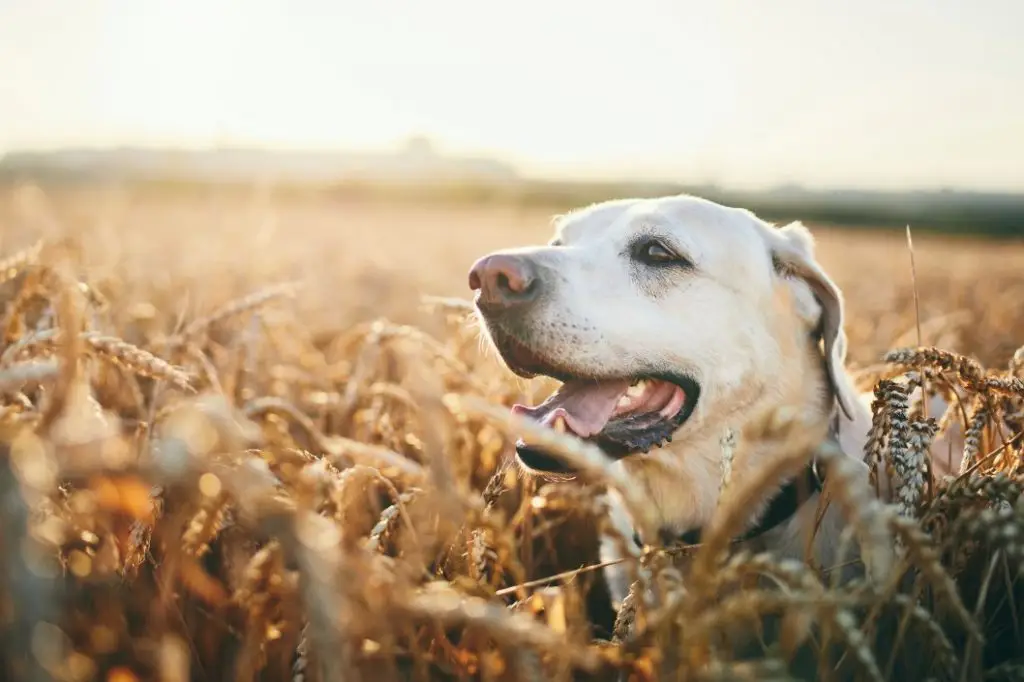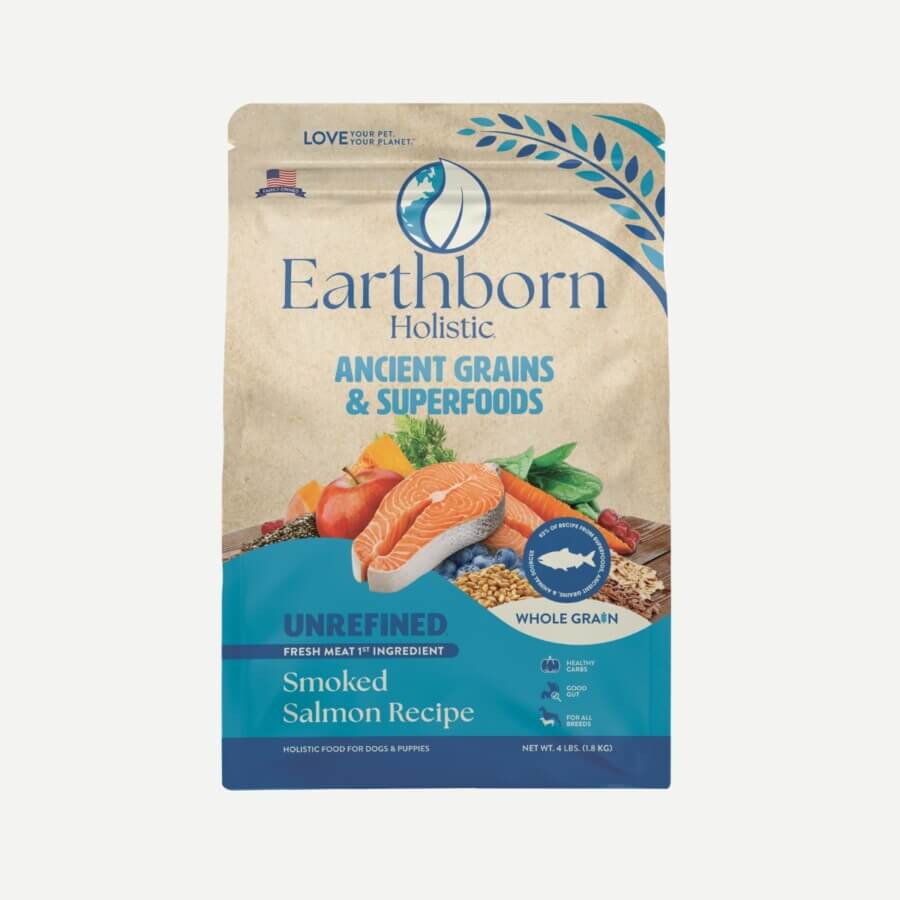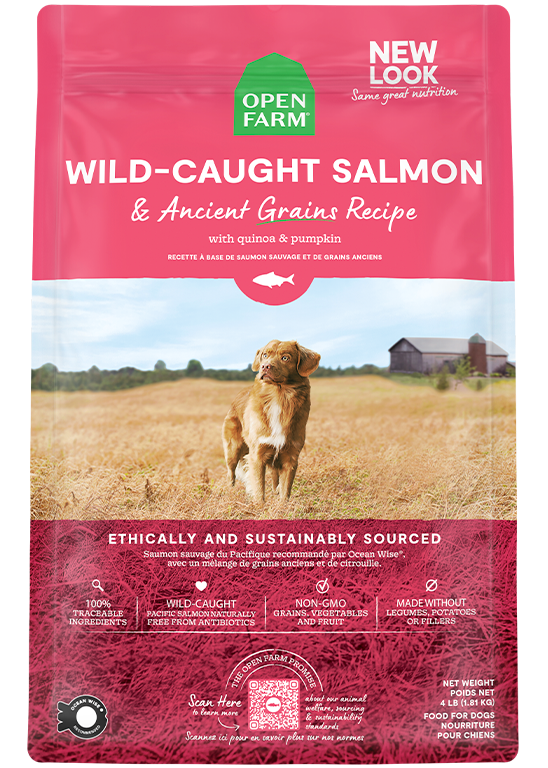Yes, ancient grains are good for dogs. They provide essential nutrients and promote overall health.
Dogs have been eating grains for centuries. Ancient grains like quinoa, millet, and barley offer rich sources of fiber, vitamins, and minerals. Unlike modern grains, ancient varieties are less processed. This means they retain more nutrients. Including these grains in your dog’s diet can improve digestion and energy levels.
Plus, they can be a good alternative for dogs with certain grain sensitivities. As a pet owner, understanding the benefits of ancient grains can help you make better dietary choices for your furry friend. Let’s explore why these grains might be the right choice for your dog’s health.

Credit: jiminys.com
Introduction To Ancient Grains For Dogs
Ancient grains are becoming popular in dog food. These grains have been grown for centuries. They offer many benefits for dogs. Let’s explore what ancient grains are and which ones are best for dogs.
What Are Ancient Grains?
Ancient grains are grains that have been unchanged for hundreds of years. They are different from modern grains like wheat and corn. Ancient grains are often more nutritious. They contain more vitamins and minerals. They are also less processed.
Common Ancient Grains For Dogs
There are many ancient grains that dogs can eat. Some popular choices include quinoa, millet, and amaranth. Quinoa is rich in protein and fiber. Millet is easy to digest and good for dogs with allergies. Amaranth is packed with vitamins and minerals. Each grain has its unique benefits.
Other ancient grains include barley, spelt, and sorghum. Barley helps with digestion. Spelt is high in protein and fiber. Sorghum is gluten-free and easy on the stomach. These grains can be a great addition to your dog’s diet.
Nutritional Benefits Of Ancient Grains
If you’re thinking about changing your dog’s diet, you might have come across the term “ancient grains.” These grains, such as quinoa, millet, and spelt, are making a comeback in the pet food industry. But what makes them so special? Here, we’ll look into the nutritional benefits of ancient grains and why they could be a great addition to your dog’s diet.
Rich In Fiber
Ancient grains are loaded with fiber. Fiber is essential for your dog’s digestive health. It helps regulate bowel movements and can prevent constipation.
I noticed a significant improvement in my dog’s digestion after switching to a diet that included quinoa. She seemed happier, more energetic, and her coat even looked shinier.
Fiber also helps control blood sugar levels. This is particularly important for dogs with diabetes or those prone to weight gain. By adding ancient grains to their diet, you’re providing a natural way to keep these levels in check.
Packed With Vitamins And Minerals
Ancient grains are nutrient powerhouses. They contain a variety of vitamins and minerals that are crucial for your dog’s overall health. For instance, quinoa is rich in magnesium, iron, and B vitamins.
Have you ever wondered why some dogs have more energy and resilience than others? Often, it comes down to their diet. Grains like millet and spelt provide essential nutrients that support energy production and immune function.
Vitamins and minerals also play a role in bone health. Calcium and phosphorus found in these grains help maintain strong bones and teeth. This is especially important for growing puppies and senior dogs.
So, are ancient grains good for dogs? With their high fiber content and nutrient-rich profile, they certainly offer compelling benefits. Have you tried ancient grains in your dog’s diet yet? If so, what changes did you notice?
Health Benefits For Dogs
Ancient grains are making a comeback, not just for humans, but for our furry friends too. These grains have been around for thousands of years and are packed with nutrients. But what exactly makes them good for dogs? Let’s explore the health benefits that ancient grains can offer to our canine companions.
Improved Digestion
Ancient grains like quinoa and millet are rich in fiber. Fiber helps regulate your dog’s digestive system. It ensures smooth bowel movements and reduces the risk of constipation. A healthy gut means a happy dog.
Boosted Energy Levels
Ancient grains are excellent sources of complex carbohydrates. Complex carbs provide long-lasting energy. Your dog will stay active and playful throughout the day. Grains like barley and spelt are great for sustained energy.

Credit: www.earthbornholisticpetfood.com
Comparing Ancient Grains To Modern Grains
Ancient grains have gained popularity in pet nutrition. Many pet owners wonder how they compare to modern grains. The debate revolves around nutrient density and digestibility. Let’s explore these aspects to understand if ancient grains are beneficial for dogs.
Nutrient Density
Ancient grains often boast higher nutrient levels. Quinoa, millet, and amaranth are rich in vitamins and minerals. They contain more fiber, protein, and antioxidants. Modern grains like corn and wheat have lower nutrient density. They are often processed, losing essential nutrients.
Dogs need a balanced diet for optimal health. Ancient grains can provide vital nutrients. These grains support energy levels and immune function. They contribute to overall well-being.
Digestibility
Digestibility is crucial for dog’s health. Ancient grains are often easier to digest. They contain less gluten. Dogs can break them down more efficiently. Modern grains can cause digestive issues. They may lead to bloating and discomfort.
Ancient grains have natural enzymes. These enzymes aid digestion. Dogs with sensitive stomachs benefit from ancient grains. They promote smooth digestion and nutrient absorption.
Potential Allergies And Sensitivities
Ancient grains can be beneficial for dogs, but they may cause allergies or sensitivities in some pets. Always consult your vet before introducing new foods.
Ancient grains like quinoa, millet, and amaranth are growing in popularity as dog food ingredients. Yet, some dogs may develop allergies or sensitivities to these grains. Understanding the potential risks is essential for your dog’s health.Identifying Grain Allergies
Grain allergies in dogs can cause various symptoms. These may include itching, redness, and digestive problems. Observing your dog’s behavior is key. If your dog scratches excessively or has an upset stomach, grains could be the culprit. To identify a grain allergy, keep a food diary. Note down the ingredients and any reactions. This record helps pinpoint the specific grain causing issues. Consult your vet for a proper diagnosis. They might suggest an elimination diet. This process involves removing suspected grains and monitoring your dog’s response.Managing Sensitivities
If your dog has a grain sensitivity, consider grain-free options. There are many high-quality grain-free dog foods available. These can help manage your dog’s sensitivities. Introduce new foods slowly. This allows you to observe any adverse reactions. Make gradual changes to your dog’s diet to avoid upsetting their stomach. Look for dog foods labeled “limited ingredient.” These foods usually have fewer components. Fewer ingredients make it easier to spot and avoid allergens. Always read the ingredient list on dog food packages. This helps you avoid grains your dog is sensitive to. Knowledge is power. Knowing what to avoid keeps your furry friend happy and healthy. “`Incorporating Ancient Grains In Dog Diets
Incorporating ancient grains in dog diets can be a great way to boost their nutrition. Ancient grains like quinoa, millet, and amaranth are packed with essential nutrients. They can provide dogs with the energy and health benefits they need to thrive.
Homemade Dog Food Recipes
Making your dog’s food at home gives you complete control over the ingredients. You can ensure they get the best of everything. Try adding cooked quinoa or millet to your dog’s meals.
One simple recipe involves mixing cooked quinoa with lean chicken, carrots, and peas. This combination offers a balanced diet. Plus, dogs usually love the taste!
Have you ever tried making treats at home? You can bake dog biscuits using a mixture of oats and amaranth flour. Add in some peanut butter and a bit of honey for a treat your dog will love.
Commercial Dog Foods With Ancient Grains
Not all of us have time to cook for our pets. Luckily, many commercial dog foods now include ancient grains. These products are convenient and nutritious.
Look for brands that list grains like barley, quinoa, or sorghum high on their ingredient list. These grains should be among the first few ingredients. This ensures your dog is getting a substantial amount of them.
Have you checked the labels on your dog’s food? Make sure it includes real, whole grains. Avoid products with vague terms like “grain meal” or “grain by-products.”
Choosing the right food can make a big difference in your dog’s health. Have you noticed any changes after switching to ancient grains? Share your experiences!
Veterinary Perspectives
Exploring ancient grains for dogs reveals potential health benefits. These grains, like quinoa and millet, can provide essential nutrients. Many dog owners are curious if these grains improve their pets’ diet.
When it comes to the health of your furry friend, you want to make the best choices possible. Veterinary perspectives can provide valuable insights into the benefits and risks of feeding ancient grains to dogs. This section will delve into expert opinions and recommended serving sizes to help you make an informed decision.Expert Opinions
Many veterinarians agree that ancient grains can be a healthy addition to your dog’s diet. These grains, such as quinoa, barley, and millet, are packed with nutrients and are less processed than modern grains. Veterinarians often point out that ancient grains can provide essential vitamins and minerals like magnesium, potassium, and iron. They can also be easier for some dogs to digest compared to standard grains like wheat and corn. Dr. Jane Smith, a renowned veterinarian, mentioned in an interview that she has seen positive changes in dogs with sensitive stomachs after introducing ancient grains. She noted improved coat health and energy levels in many of her patients.Recommended Serving Sizes
When adding ancient grains to your dog’s diet, it’s crucial to start with small portions. Too much too soon can lead to digestive issues. A good rule of thumb is to begin with a tablespoon of cooked ancient grains mixed into their regular food. Observe your dog’s reaction. If they tolerate it well, you can gradually increase the serving size. For a medium-sized dog, about a quarter cup of cooked ancient grains per day is generally safe. Remember, balance is key. Ancient grains should complement a well-rounded diet, not replace other essential nutrients. Always consult your vet before making any significant changes to your dog’s diet to ensure you’re meeting their specific health needs. Incorporating ancient grains can be beneficial, but it’s essential to proceed with care and professional guidance. Have you tried adding ancient grains to your dog’s diet? What changes did you notice?
Credit: openfarmpet.com.au
Frequently Asked Questions
Is Grain Free Or Ancient Grains Better For Dogs?
Ancient grains can be better for dogs with grain sensitivities. Grain-free diets may suit dogs with allergies. Consult your vet.
What Is The Healthiest Grain For A Dog?
Brown rice is the healthiest grain for dogs. It is rich in fiber, vitamins, and minerals, promoting digestive health.
Is Ancient Grains A Good Dog Food Brand?
Ancient Grains is a good dog food brand. It offers high-quality ingredients, supports digestion, and provides essential nutrients for dogs.
What Grains Should Be Avoided For Dogs?
Avoid feeding dogs grains like corn, wheat, and soy. These can cause allergies and digestive issues. Opt for dog-friendly grains like rice or oats instead.
Conclusion
Ancient grains can benefit your dog’s diet. They provide essential nutrients. Dogs enjoy the variety and taste. Introduce them gradually to avoid issues. Consult your vet for advice. Your pet’s health is the priority. Keep their meals balanced. Happy dogs make happy homes.